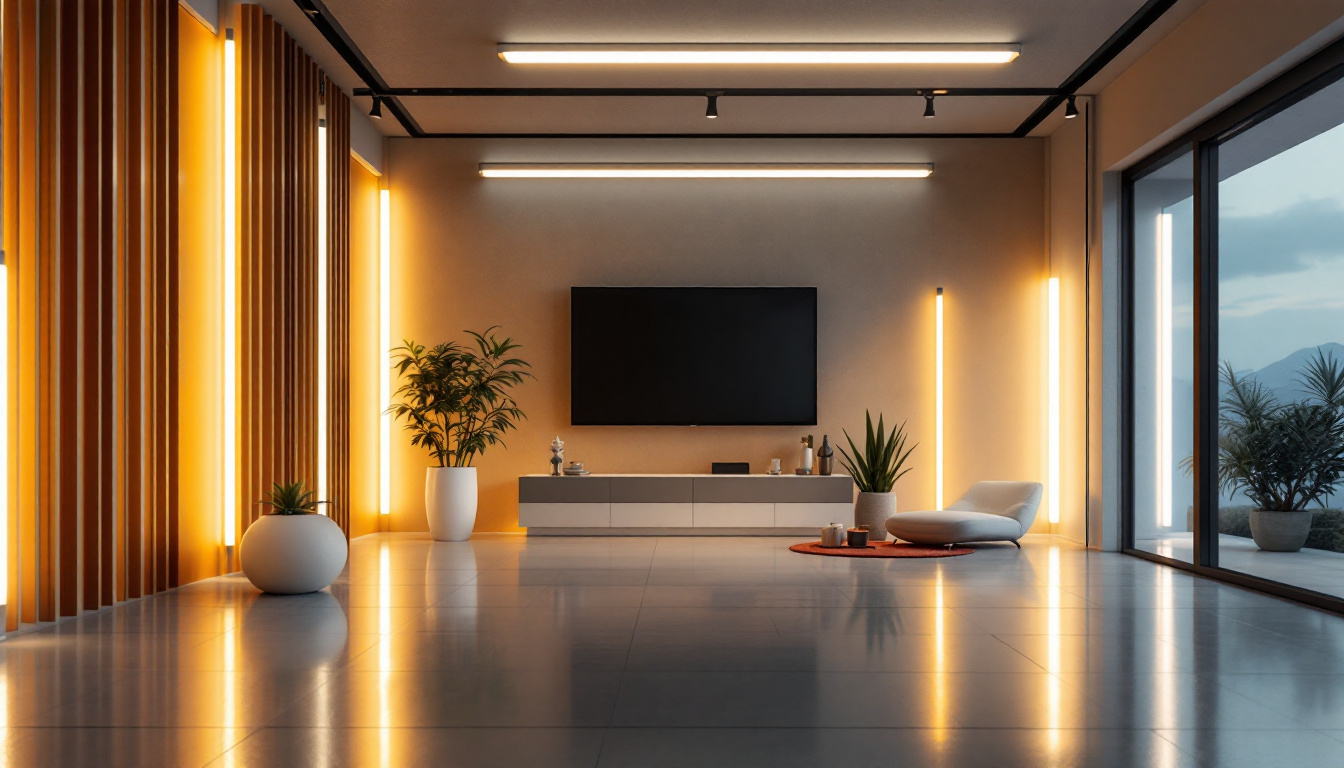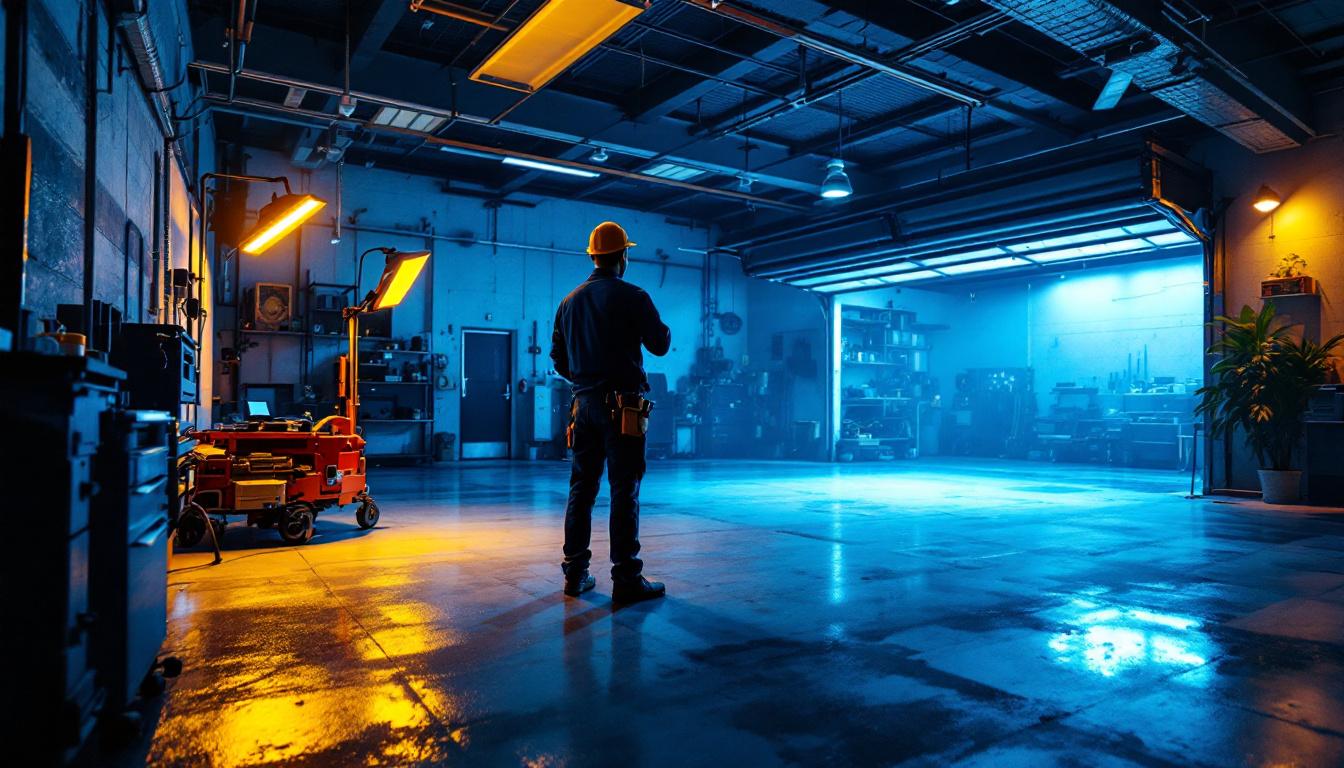
In the ever-evolving world of lighting technology, LED tube lights have emerged as a popular choice for both residential and commercial applications. Their energy efficiency, long lifespan, and versatility make them a favored option among lighting contractors and homeowners alike. This article delves into the essential aspects of LED tube lights, exploring their benefits, types, installation methods, and much more.
LED tube lights are a modern alternative to traditional fluorescent tube lights. They utilize light-emitting diodes (LEDs) to produce bright, efficient lighting. Unlike their fluorescent counterparts, LED tubes do not contain hazardous materials like mercury, making them a safer choice for the environment. Furthermore, their compact design allows for versatile installation options, making them suitable for a variety of settings, from residential kitchens to large commercial spaces.
LED tube lights operate by passing an electric current through a semiconductor material, which then emits light. This process is highly efficient, converting a significant portion of energy into visible light rather than heat. As a result, LED tube lights consume less power and have a longer lifespan compared to traditional lighting options. The technology behind LEDs also allows for a range of color temperatures, enabling users to select warm or cool lighting according to their preferences or the requirements of the space.
One of the most significant advantages of LED tube lights is their energy efficiency. They can reduce energy consumption by up to 50% compared to fluorescent tubes. This translates to lower electricity bills and a reduced carbon footprint. In addition to energy savings, LED tube lights provide instant illumination without the flickering often associated with fluorescent lights, enhancing the overall user experience.
Additionally, LED tube lights have a lifespan of approximately 25,000 to 50,000 hours, far exceeding that of traditional bulbs. This longevity means less frequent replacements, which can save both time and money for contractors and building owners. Moreover, the durability of LED technology makes these lights resistant to shock, vibrations, and extreme temperatures, making them ideal for use in warehouses, factories, and outdoor applications. With advancements in smart technology, many LED tube lights can now be integrated with smart home systems, allowing for remote control and automation, further enhancing their appeal in modern lighting solutions.
LED tube lights come in various types, each designed for specific applications. Understanding these types is crucial for selecting the right product for a particular lighting project.
Direct replacement LED tubes are designed to fit into existing fluorescent fixtures without requiring any modifications. They typically use the same sockets and can be installed quickly and easily. This type is ideal for contractors looking to upgrade existing lighting systems without extensive rewiring. Additionally, these tubes often come in a variety of color temperatures, allowing users to choose between warm, neutral, or cool white light, which can significantly affect the ambiance of a space. For instance, warm white light is often preferred in residential settings for its cozy feel, while cool white light is favored in commercial spaces for its bright, energizing effect.
Universal LED tubes offer flexibility in installation, as they can operate on both electronic and magnetic ballasts. This versatility makes them suitable for a wide range of applications, allowing contractors to use them in various settings without worrying about compatibility issues. Furthermore, universal tubes often come with features such as dimming capabilities, which can enhance energy efficiency and provide customizable lighting solutions for different tasks or moods. This adaptability makes them a popular choice for environments that require varying light levels, such as offices, retail spaces, and even art galleries, where lighting can dramatically influence the perception of displayed works.
Ballast-bypass LED tubes require the removal of the existing ballast, allowing them to be wired directly to the power source. While this may involve more installation effort, it can lead to even greater energy savings and reduced maintenance costs in the long run. Additionally, by eliminating the ballast, these tubes can reduce the risk of flickering and extend the lifespan of the lighting system. Many users appreciate the enhanced reliability and performance, as ballast-bypass tubes often provide a more consistent light output. Moreover, they are typically more energy-efficient, converting a higher percentage of electricity into usable light, which is an attractive feature for environmentally conscious consumers and businesses looking to lower their carbon footprint.
Proper installation is critical to maximizing the performance and lifespan of LED tube lights. Contractors should pay attention to several key factors during the installation process.
Before installing LED tube lights, it is essential to assess the electrical compatibility of the existing fixtures. Understanding whether the tubes will be used with ballasts or as ballast-bypass units will determine the installation method and ensure optimal performance.
LED tube lights come in various sizes, typically ranging from 2 to 8 feet in length. Contractors must ensure that the chosen tubes fit the existing fixtures correctly. Additionally, the type of fixture—whether it is a troffer, surface mount, or pendant—can influence the choice of LED tube light.
Choosing the right light output and color temperature is crucial for achieving the desired ambiance in a space. LED tube lights are available in various lumen outputs and color temperatures, ranging from warm white to cool daylight. Contractors should consider the specific lighting needs of each project to select the most suitable options.
The energy efficiency of LED tube lights not only benefits the environment but also translates into significant cost savings for businesses and homeowners. Understanding the financial implications of switching to LED technology can help contractors make informed recommendations to their clients.
To calculate the energy savings from switching to LED tube lights, contractors can compare the wattage of the existing fluorescent tubes with the wattage of the proposed LED tubes. For instance, if a facility currently uses 32-watt fluorescent tubes and switches to 18-watt LED tubes, the energy savings per tube can be substantial.
While the initial investment in LED tube lights may be higher than traditional options, the long-term financial benefits can be significant. Reduced energy bills, lower maintenance costs, and fewer replacements contribute to a favorable return on investment over time.
The environmental benefits of LED tube lights extend beyond energy savings. As lighting contractors, understanding the broader ecological implications of lighting choices is essential in promoting sustainable practices.
Unlike fluorescent tubes, which contain hazardous materials like mercury, LED tube lights are free from such substances. This means that when they reach the end of their lifespan, they do not pose the same environmental risks, making them a more eco-friendly choice.
By consuming less energy and reducing greenhouse gas emissions, LED tube lights contribute to a lower carbon footprint. This is particularly important in commercial settings, where large-scale lighting solutions can have a significant impact on overall energy consumption and environmental sustainability.
With a plethora of options available in the market, selecting the right LED tube lights can be challenging. Contractors must consider several factors to ensure they make informed choices that meet their clients’ needs.
When selecting LED tube lights, it is essential to consider the reputation of the manufacturer. Established brands often provide higher-quality products with better warranties and customer support. Researching product reviews and seeking recommendations from industry peers can aid in making informed decisions.
Look for LED tube lights that meet industry standards and certifications, such as Energy Star or UL listings. These certifications indicate that the products have undergone rigorous testing for safety and performance, providing additional assurance of their quality.
A robust warranty can be a strong indicator of product quality. Many reputable manufacturers offer warranties ranging from three to five years, reflecting their confidence in the longevity and performance of their products. Additionally, reliable customer support can be invaluable in addressing any issues that may arise during installation or use.
As technology continues to advance, the future of LED tube lighting looks promising. Staying informed about emerging trends can help contractors remain competitive and offer innovative solutions to their clients.
Smart lighting technology is becoming increasingly popular, allowing users to control their lighting systems remotely through smartphones or voice-activated devices. LED tube lights are being integrated into smart systems, enabling features such as dimming, scheduling, and color changing, which can enhance user experience and energy efficiency.
Ongoing research and development in LED technology are focused on improving energy efficiency even further. New advancements may lead to higher lumen outputs with lower wattage consumption, making LED tube lights an even more attractive option for contractors and clients.
Design innovations are also shaping the future of LED tube lights. Sleeker designs and customizable options are becoming more prevalent, allowing contractors to cater to diverse aesthetic preferences while maintaining functionality and efficiency.
LED tube lights represent a significant advancement in lighting technology, offering numerous benefits in terms of energy efficiency, longevity, and environmental impact. For lighting contractors, understanding the various types, installation considerations, and emerging trends is essential for providing clients with the best possible solutions. As the industry continues to evolve, embracing LED technology will not only enhance lighting quality but also contribute to a more sustainable future.
Ready to elevate your lighting game with the most efficient LED tube lights on the market? Look no further than LumenWholesale, where we provide lighting contractors with the highest quality, spec-grade lighting products at unbeatable wholesale prices. Say goodbye to local distributor markups and hello to our premium selection that meets rigorous industry standards. Plus, with free shipping on bulk orders, you can stock up on superior lighting solutions without worrying about hidden fees. Don’t compromise on quality or value; choose LumenWholesale for the perfect blend of affordability and convenience. Wholesale Lighting at the Best Value is just a click away.

Discover why wire pulling ropes are indispensable tools for lighting contractors.

Discover why purchasing LED strip light retrofit kits in bulk from local distributors might not be the best choice.

Discover how indoor garage lighting choices can significantly impact the profitability of lighting contractors.

Discover how motion detecting outdoor lights can revolutionize cost efficiency for lighting contractors.